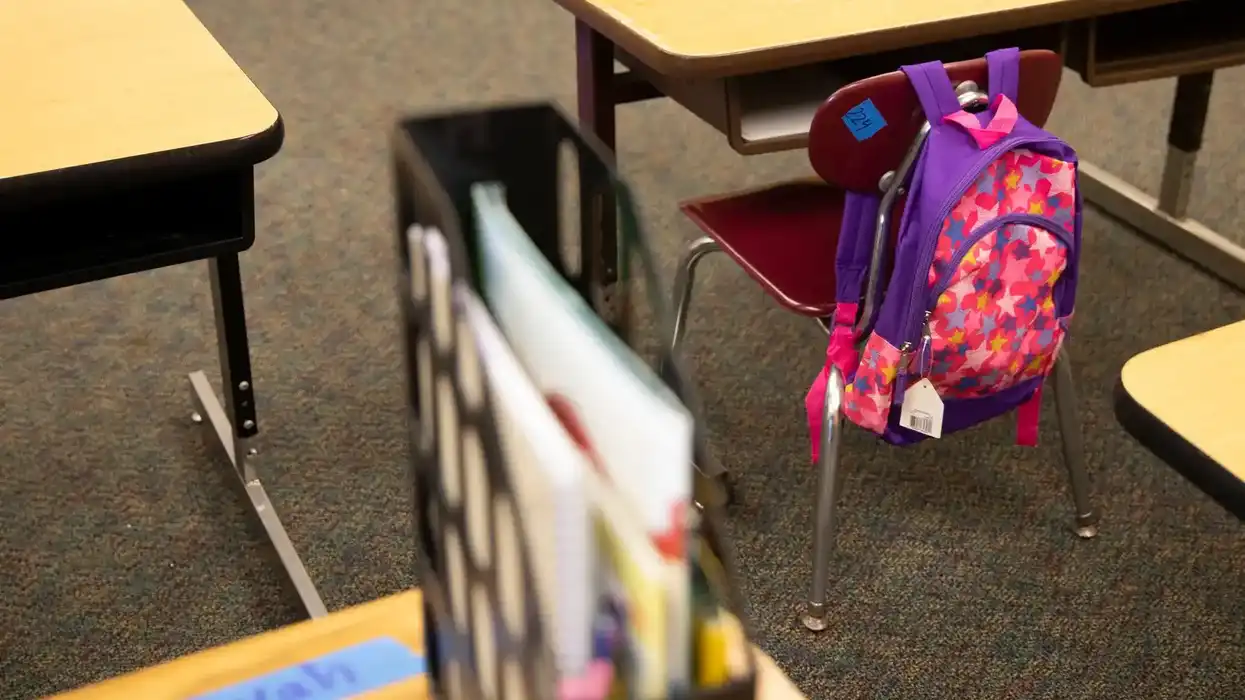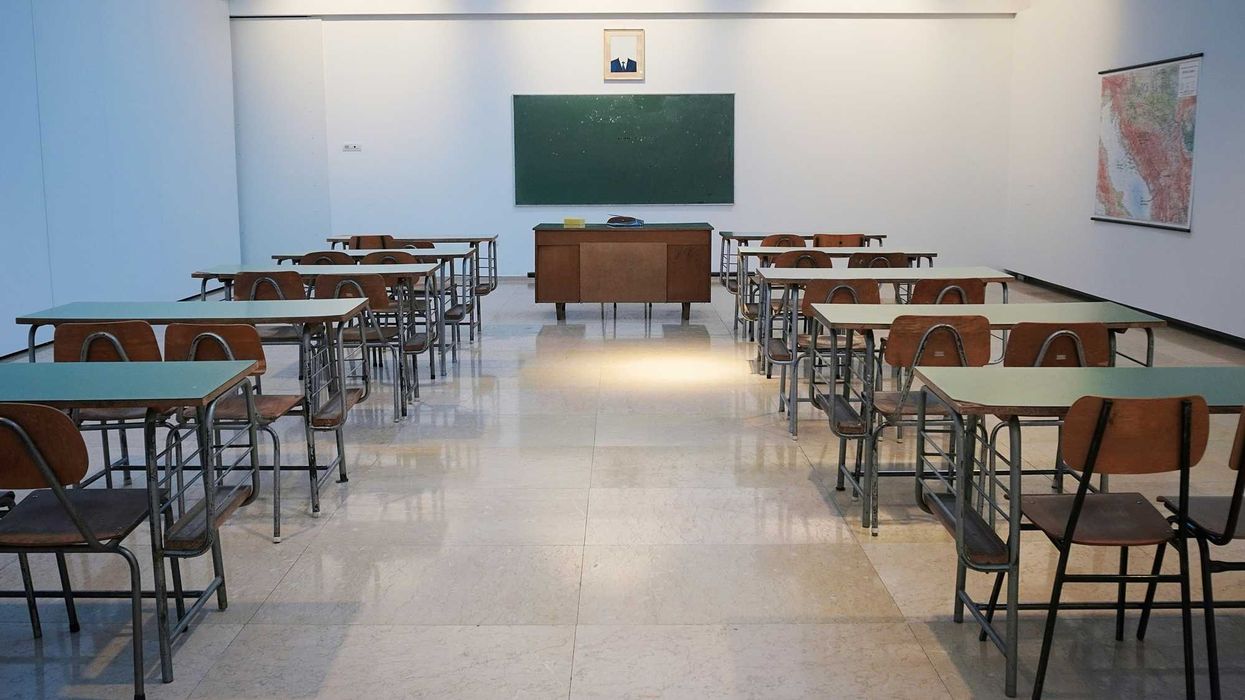As The 19th makes plans for 2026, we want to hear from you! Complete our annual survey to let us know your thoughts.
President Donald Trump has taken his most decisive step yet toward dismantling the Department of Education, a move that will have widespread ramifications for vulnerable students and has raised concerns among education leaders and lawmakers who contend that it will create chaos and confusion for families instead of giving them the help they actually need.
His administration announced on Tuesday that it will transfer core agency functions to four other federal offices — news met with fierce criticism by education advocates who questioned its legality and said it is an abandonment of the nation’s students.“
Donald Trump and his administration chose American Education Week, a time when our nation is celebrating students, public schools, and educators, to announce their illegal plan to further abandon students by dismantling the Department of Education,” said National Education Association (NEA) President Becky Pringle in a statement. “It’s cruel. It’s shameful. And our students deserve so much better.”
The Trump administration will reassign the department’s key programs involving K-12 education, higher education, Indian education and international studies through so-called interagency agreements with the departments of Labor, Interior, Health and Human Services and State.
The reorganization marks one of the most significant overhauls to the department since its establishment during former President Jimmy Carter’s administration in 1979. Only Congress can create a federal agency and has the sole authority to approve its restructuring or elimination.
The move to restructure the agency, Trump officials argue, will lead to more efficiency by reducing administrative burdens and making it easier to pursue objectives like aligning education with workforce readiness.
Vulnerable students stand to be uniquely affected by the reorganization with the shift of K-12 programs to the Department of Labor raising major concerns about the wellbeing of economically disadvantaged students. The Labor Department will manage programs such as Title I, which provides additional resources to K-12 schools serving such students. Labor will also administer postsecondary education grant programs authorized under the Higher Education Act with the goal of ending an estimated labor shortage of over 700,000 skilled jobs nationally.
“Moving Title I, the largest federal funding stream providing important resources to the schools serving the lowest-income students in America, to the Department of Labor makes no sense,” said Denise Forte, president and CEO of The Education Trust, a nonprofit that advocates for equity in the nation’s schools.
“The Trump administration began the process of selling off the Department of Education for parts,” Forte said in a statement. “Further diminishing these offices… and sending them off to be run by agencies that work on public health and short-term training, which lack the skills, expertise, or capacity in education, isn’t about improving student outcomes. It’s about implementing a business model that transforms students into widgets instead of human beings who need support.”
Leaders of the nation’s two largest teacher unions, the NEA and the American Federation of Teachers (AFT), characterized the restructuring as a betrayal of students and families.
“This move is neither streamlining nor reform — it’s an abdication and abandonment of America’s future,” AFT President Randi Weingarten said in a statement. “Rather than show leadership in helping all students seize their potential, it walks away from that responsibility.”
Similarly, Weingarten pushed back against the idea that the restructuring was about efficiency.
“What’s happening now isn’t about slashing red tape,” she said. “If that were the goal, teachers could help them do it …Instead, spreading services across multiple departments will create more confusion, more mistakes and more barriers for people who are just trying to access the support they need.”
Other changes affect groups of students who have traditionally needed extra support: The Department of the Interior will be the primary administrator for Indian Education programs, functioning as the point of contact for tribes and students. The Department of Health and Human Services will manage a program for student-parents in college called Child Care Access Means Parents in School (CCAMPIS) and another related to foreign medical school accreditation standards. Finally, the Department of State will administer the Fulbright-Hays Program which awards grants to students, teachers, administrators and institutions.
It’s unclear how Native American students will fare with Indian Education programs moved to the Interior Department, an agency that manages natural resources and not the education of children. The future of the thousands of student-parents in college who rely on campus-based childcare grants is also uncertain, since moving the Child Care Access Means Parents in Schools program to the Health and Human Services Department could lead to disruptions in support for them that sidetrack their journey to a degree. Transferring responsibilities from the Department of Education to the Department of Labor undermines public education’s purpose, according to National Parents Union President Keri Rodrigues.
“At a time when the public demands transparency regarding the Epstein files, the Administration has instead launched a chaotic assault on education,” she said in a statement. “Families see this clearly: a political diversion, not a vision for better schools. Public education has never been about turning children into factory workers, it has always been about preparing creators, innovators, and dreamers who will shape the future of our nation.”
Democratic Sen. Patty Murray, who serves as vice chair of the Senate Appropriations Committee, questioned the constitutionality of the interagency agreements.
“Donald Trump and Linda McMahon are lawlessly trying to fulfill Project 2025’s goal to abolish the Department of Education and pull the rug out from students in every part of the country,” stated the Washington lawmaker, a former preschool teacher.
Democratic Rep. Summer Lee, who serves on the House Committee on Oversight and Government Reform and the Committee on Education and Workforce, called the shakeup “a direct assault on the students, families, and educators who depend on its essential protections.”
In her statement, the Pennsylvania lawmaker emphasized that even the education secretary has acknowledged that only Congress has the authority to eliminate the department.
“Our children deserve better than political stunts that jeopardize their futures,” she said. “And let’s be clear: an uneducated electorate isn’t a by-product of authoritarianism — it’s a prerequisite for it. We will fight back.”
Critics of the department’s makeover also said they feared that its Office for Civil Rights (OCR) and Office of Special Education and Rehabilitative Services would be the next to be reassigned to other federal agencies. The Trump administration has diminished their power and effectiveness through staff cuts and — in the case of OCR in particular — regional office closures that have led to civil rights cases not being investigated.
“Transferring OCR’s authority to another department that is ill-equipped to carry out its critical functions would all but guarantee that civil rights complaints will continue to be dismissed en masse without resolution,” Forte said. Such a development would disproportionately affect students of color, students with disabilities and English learners.
Education leaders, including the AFT, and lawmakers are already preparing to challenge the reorganization in court.
‘Selling off the Department of Education for parts’: The agency’s major overhaul faces fierce backlash was first published on The 19th and was republished with permission.




















